The lab team at the Centre for Industrial Rheology examined two toothpaste samples to compare foaming properties and uncover what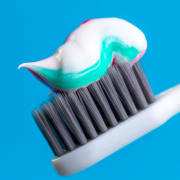 physical characteristics could be contributing to any differing properties. Surface tension is typically a key factor influencing foaming properties. However, as found within this case study, the surface tension of both samples did not show any significant differentiation, whilst the foaming properties differed greatly.
physical characteristics could be contributing to any differing properties. Surface tension is typically a key factor influencing foaming properties. However, as found within this case study, the surface tension of both samples did not show any significant differentiation, whilst the foaming properties differed greatly.
At the Centre for Industrial Rheology, we have a unique offering whereby we can deform the interface using our oscillatory pendant drop analysis. This allows us to characterise the viscoelastic properties of the interface, uncovering insights into other factors that may be causing differing foaming properties.
As seen in Figure 1, the viscoelastic modulus of the Sensodyne interface was revealed to be more than double that of Colgate, while surface tension was similar between samples.
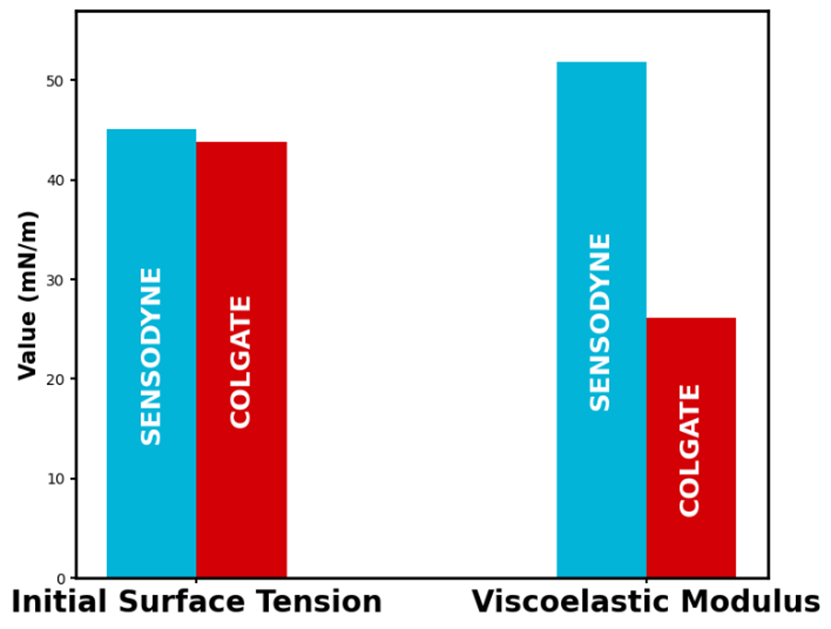
Foaming of Toothpaste
One notable aspect of toothpaste is its ability to produce foam during brushing. Foam aids in the distribution of toothpaste, increasing its contact with teeth and gums. Fine-pored foam effectively reaches difficult-to-access areas, while excessive or large-pored foam results in less effective cleaning and a coarser feeling. In addition to this, foam can enhance a consumer’s experience by providing a smooth and creamy mouthfeel, imparting a sense of cleanliness and freshness. Foaming behaviour is a crucial characteristic, and dental care products undergo rigorous testing, including foam analysis, to optimise formulations for successful outcomes.
Sample Prep for the KRUSS Dynamic Foam Analyzer
Two popular toothpastes by market leaders were chosen to be examined. We prepared suspensions of both toothpaste samples by adding 2.5g to 250ml of distilled water before stirring. Each test involved 50ml of sample suspension stirred in our KRUSS Dynamic Foam Analyzer.

Following analysis in the Dynamic Foam Analyzer, samples were tested in our KRUSS Drop Shape Analyzer to investigate the surface tension and interfacial moduli of the samples.
Bubble Breakdown: Comparing Foam Structure and Stability of Samples
The results from the Dynamic Foam Analyzer showcased significant differences in foam structure and stability between the two toothpastes. Colgate generated a coarser foam with larger bubbles from the outset. Over time, these bubbles coalesced, increasing further in size, demonstrating low foam stability. Conversely, Sensodyne produced a fine foam, characterised by small, abundant bubbles. Over time, only a relatively low degree of change was observed in both bubble count and size for Sensodyne, indicating higher foam stability when compared to Colgate.
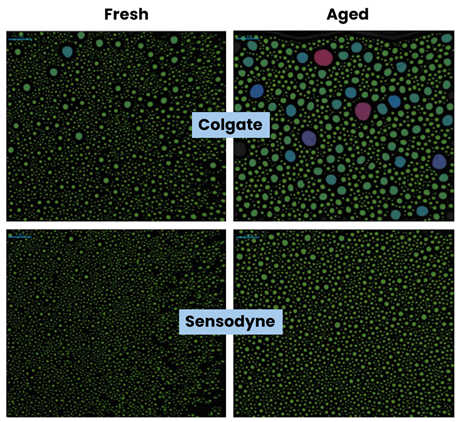
Bubble Size Distribution
The bubble size distribution after the foam had aged further emphasises that Sensodyne exhibited a much higher concentration of small bubbles, with an increased frequency of bubbles. In comparison, Colgate showcased a much lower bubble count and a wide bubble size distribution. These findings reinforce that Sensodyne’s formulation supports the formation of a finer, more stable foam, whereas Colgate’s structure is more prone to coalescence and collapse.
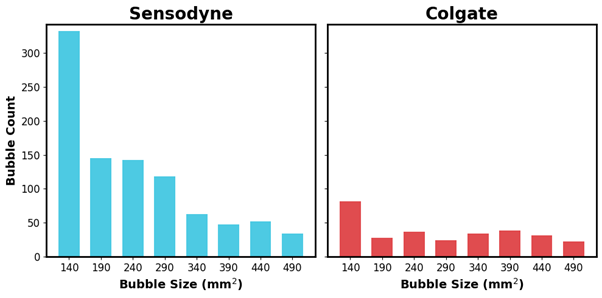
Surface Tension
While it’s useful to differentiate between the foaming properties of various samples, it’s equally important to pair this data with insights into the underlying factors driving these differences. Typically, surface tension is a key factor used to differentiate foaming properties.
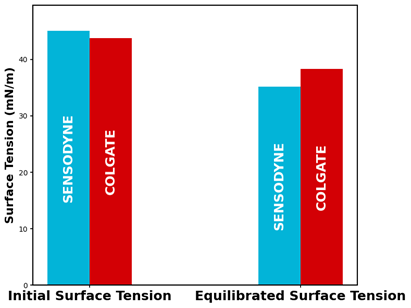
Despite the distinct differences in foam stability and structure, both toothpastes presented very similar surface tensions. While surface tension is often a key contributor to foam stability and structure, the observed variation in foam characteristics suggests that there may be other factors responsible for the differing foaming properties of these formulations.
Interfacial Moduli
To explore further potential contributors to the observed differences, we examined the viscoelastic properties of the interface. By exploring the viscoelastic behaviour at the interface, we can provide a detailed quantification of the interplay of elastic and viscous responses to deformation. Oscillatory pendant drop methods quantify how the interface responds as it is expanded and contracted. Elastic behaviour is characterised by the change in interfacial tension as the surfactant concentration per unit area changes due to the expansion or contraction. Simultaneously, viscous behaviour is a quantification of the time-dependent interchange of surfactants between the bulk solution and the interface during the expansion and contraction.
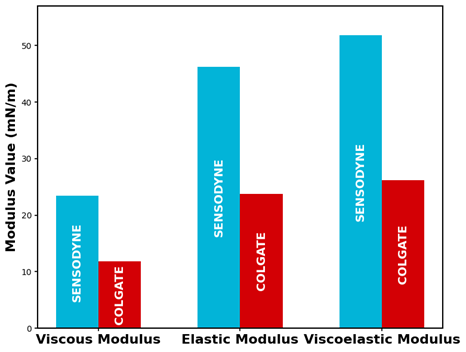
The Sensodyne interface demonstrated a significantly greater viscoelastic modulus compared to Colgate. This indicates that the interface of Sensodyne exhibits higher rigidity and resistance to deformation, which may contribute to its ability to maintain a fine and stable foam over time. While both toothpastes exhibit a higher elastic modulus than viscous modulus, Sensodyne has a significantly higher elastic modulus, indicating better resistance to deformation at the interface.
These results suggest that viscoelasticity at the interface could serve as a useful indicator when differentiating the foaming properties of these formulations, particularly where surface tension differences between samples are minimal. With further investigation, these insights could be leveraged to offer a valuable route to optimise formulations.
Summary
The lab team examined and compared the foaming properties of both toothpaste samples. Where the surface tension difference between samples is minimal, we proposed looking at viscoelasticity at the interface as a factor that could be contributing to the differing foaming properties. Looking at viscoelasticity at the interface allows the characterisation of samples to unlock insights that extend beyond routine surface tension measurements, providing potentially crucial and innovative insights for product development.
In addition to foam analysis and drop shape analysis, our rheological methods can provide complementary data to assist in perfecting formulations. See our article on toothpaste rheology to find out more about the rheology behind toothpaste.
If you are interested in characterising your samples, do not hesitate to contact us.
